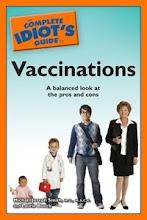Along with large racial/genetic differences in early puberty onset in girls, there are two other potential causes. It might be caused by chemicals in the environment that mimic estrogen or cause other hormonal disruptions, triggering the body to begin puberty. Prime chemical suspects include pesticides and herbicides, flame retardants, and bisphenol A (BPA) (a chemical I've blogged about before), according to an article on early puberty by USA Today's Liz Szabo.
Weight also plays a role. The study found that obese and overweight girls, as measured by their body mass index (BMI), are more likely to start puberty early than normal-weight girls. Fat cells in their bodies create and release the hormone leptin, which can trigger puberty.
Puberty onset is a tricky thing, though, because it is also influenced by other medical, social, or environmental factors. Certain rare medical problems, such as a tumor or meningitis, can cause early puberty. Some studies have suggested that girls are more likely to start puberty earlier than average if they are adopted internationally, don't live with their biological fathers, or if their mothers are depressed.
Whatever the cause, early onset of puberty is both physically and emotionally unhealthy for girls. These girls are more likely to have low self-esteem, have a poor body image, become sexually active earlier, and develop certain cancers later in life, the Pediatrics study stated.
With one in three U.S. children overweight or obese, the rates of early puberty will probably continue to increase. Early puberty is yet another reason to substantively address the many causes of obesity in this country, and to substantively regulate how certain chemicals are used in the environment, food packaging, and foods.
Resources:
- The Environmental Working Group's Body Burden page contains extensive information on the toxic chemicals found in the human body, particularly BPA
- Follow this CDC link to calculate your child's BMI



